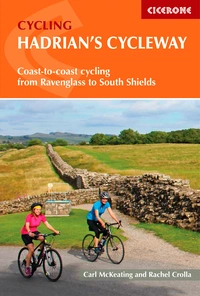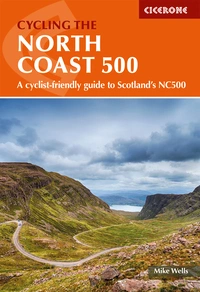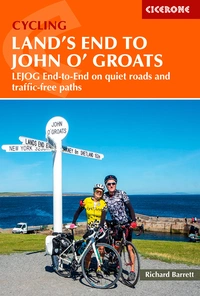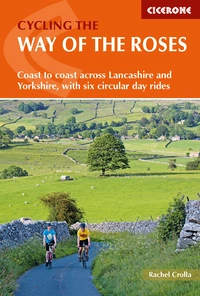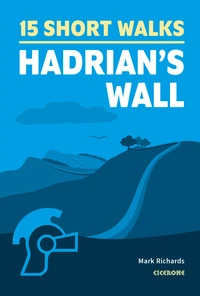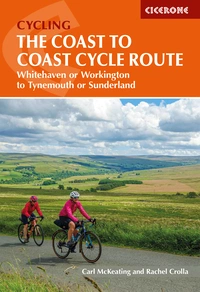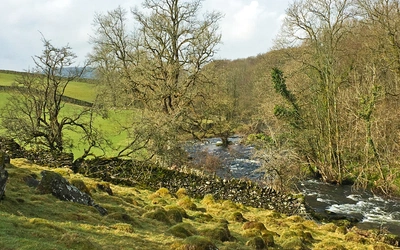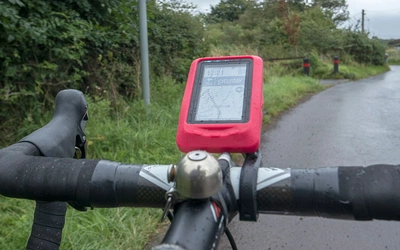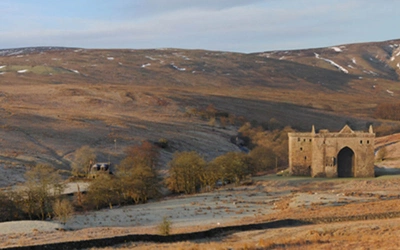Hadrian's Wall Cycle Route – what you need to know
Are you looking for your next cycling adventure? Hadrian’s Cycleway makes a perfect short cycle tour. Including both the Lake District and Northumberland as well as the UNESCO World Heritage Site of Hadrian’s Wall, this route is steeped in history and beautiful scenery. Read on to discover key information about the route.
Hadrian’s Cycleway (HCW), also known as National Route 72, is a magnificent coast-to-coast ride that crosses northern England along the most northerly frontier of the Roman Empire. The route takes in Hadrian’s Wall and its fascinating settlements, forts, mile-castles, fortlets and turrets. While a number of towns and cities are connected on HCW, these are mostly negotiated by enjoyable, cleverly worked, traffic-free cycle paths along rivers and dismantled railways. As well as the official route, our guidebook describes the More Wall Alternative (MWA) – a variation that enhances the riding experience on the tour and is strongly recommended.
Hadrian’s Wall is, of course, a highlight of the route. Emperor Hadrian (Publius Aelius Hadrianus) arrived in 122AD and oversaw the construction of a wall from what are today Bowness-on-Solway to Wallsend. The Wall was 15ft high, bordered by a ditch filled with sharpened spikes backed up by Vallum – a substantial earthwork much of which remains today – and punctuated by fully garrisoned forts. After the Roman governance of Britannia ceased in the 5th century, the influence of Rome largely disappeared overnight, and the wall fell into disrepair.

How far is Hadrian’s Cycleway?
Showcasing the vestiges of Roman Britain, the 174 mile (277km) coast-to-coast cycle route begins at Glannaventa Roman Fort in Ravenglass and finishes at Arbeia Fort in South Shields.
How long does it take to ride Hadrian’s Wall Cycleway?
For an enjoyable three-day ride, you will need to be saddle fit and have completed some training (day rides of 40+ miles) in the weeks leading up to your trip. More days will allow extra time to get to and from the route and especially for exploring Hadrian’s Wall and the numerous Roman sites along the way. Four and even five-day tours are not uncommon, allowing more time for sightseeing. The full HCW in two days would definitely be a very tough challenge and is not really a good choice for average cyclists.
Is the Hadrian’s Cycleway difficult?
HCW is an enjoyable challenge within the reach of almost all cyclists. Of the four main northern coast-to-coast routes, HCW is unequivocally the least strenuous. That is not to say it is in any way easy, however. While there is significant if somewhat imperceptible height gain on Day 1, the hardest climbing is concentrated on the Pennine sections of Day 2 and Day 3. Although the middle section of HCW feels lofty, the peak altitude of the route is only 255m.
If trying to decide between Hadrian's Wall cycle route and other Sustrans coast-to-coast routes, HCW is more road bike-friendly than either the C2C or the Reivers. It also involves considerably less ascent than either of those two routes and quite a bit less than the Way of the Roses further south.
Which way should you cycle the route?
In our guidebook, the HCW is described in a west to east direction. This is the most common direction in which cyclists undertake the ride to take advantage of the westerlies (wind that blows from west to east) that are common in UK wind patterns. HCW is impressively well signed in both directions with the small blue pointer signs of the National Cycle Network 72 and/or the white outline of a Roman centurion helmet.
What kind of bike do you need for Hadrian’s Cycleway?
The answer is simply to use a bike that you are comfortable riding and the capabilities of which you know well but make sure that your bike is set up correctly for you – you will be on it for long consecutive stretches. The ride is just feasible on a road bike without the need for any road-only detours. There are, however, two significant sections on the official route that stretch the limits of what the average road bike user will accept – the guidebook offers road alternatives for these sections. Touring, hybrid, tandem and electric bikes are also viable options.
How to reach the start and end of the cycleway?
Ravenglass is out on the edge of northern England and is reached by the looping Cumbrian Coast Railway with connections from the West Coast Mainline at either Lancaster or Carlisle. It is possible to leave your car in Ravenglass and catch trains back from Newcastle using the Tyne Valley Railway and Cumbrian Coast Railway. No reservations are needed for bikes although, strictly speaking, the trains do not have to carry more than two bicycles at a time if they are busy.
Support vehicles are discouraged from driving large sections of the actual route as this can be inconsiderate to other cyclists. It is easy to find free and paid parking close to the start and finish of the route. Also, a few companies offer return transport between Newcastle and Ravenglass either before you start or after you complete the ride.
It is worth nothing that, if you begin the cycle on a Sunday, an early start is advisable to ensure the Shields Passenger Ferry is reached before its last sailing at 5.45pm (last sailing Monday–Wednesday 7.45pm; Thursday–Saturday 10.40pm).
What accommodation is available on the route?
There is ample accommodation along the route, wherever you choose to break up the ride. Advanced accommodation booking in spring and summer in the region of the Wall is recommended for this route, even if you’re camping. However, it is worth noting that campsites in the vicinity of the Wall tend to be more expensive than might be expected.
Hadrian's Cycleway
Coast-to-coast cycling from Ravenglass to South Shields
£14.95
Guidebook to Hadrian's Cycleway, a 174 mile coast-to-coast route across northern England, following the corridor of the Hadrian's Wall World Heritage Site. From Ravenglass in Cumbria through Northumberland to South Shields, with an alternative Tynemouth finish, on cycle paths and quiet country roads suitable for cyclists of all abilities.
More information
